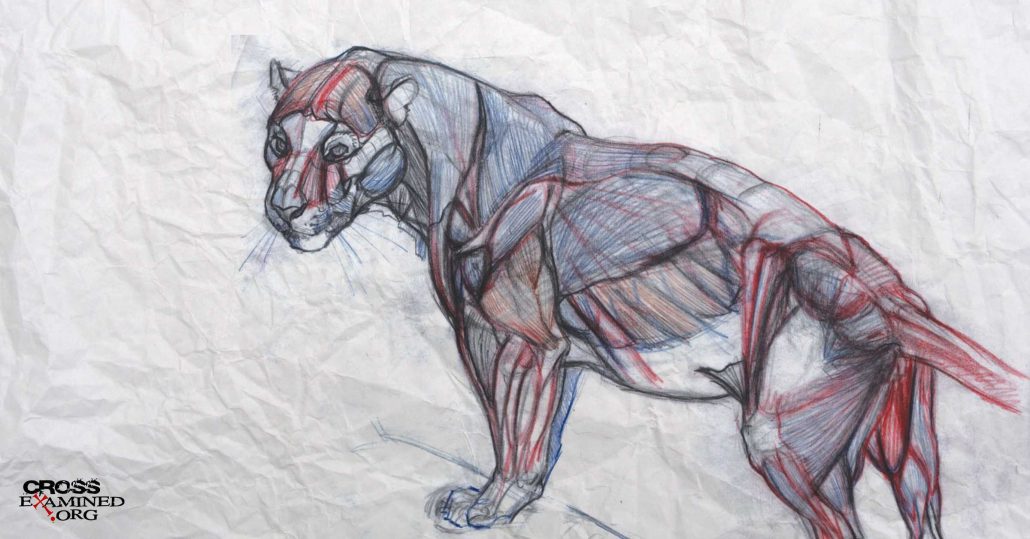Reference Guide to Biblical Numerology
By Brian G. Chilton
Early Apostolic Church Fathers (100-451 AD) recognized that Scripture had four layers of interpretation. They used a method called quadriga which held the following layers: 1) Literal (sensus historicus), 2) Allegorical (sensus allegoricus—texts hold symbolic meaning), 3) Tropical/moral (sensus tropologicus or sensus moralis—broader moral lessons), and 4) Anagogical (sensus anagogicus—mystical, metaphorical sense). Often numbers are used symbolically to indicate certain truths. This article will provide an extensive glimpse at the most common symbolic numbers used in Scripture. A gauge will be used to indicate the certainty that I hold with the meaning given to the number. The word symbolize is used of numbers for which there is great confidence in its symbolic meaning. The word represents is used for numbers of which there is good confidence in its symbolic reference. Implies represents numbers that have fair representation for the meaning attributed to it. The phrase may imply is used for numbers that could hold symbolic meaning but doesn’t hold a good deal of evidence to support the meaning given to it.
1) Symbolizes the unity of God (there is one God) (Deut. 6:4; 1 Cor. 8:4: Gal. 3:20). The number also represents the unity between the Father and the Son (Jn. 10:30), the singular sacrifice of Christ, and Christ’s being the one Mediator and Shepherd (1 Tim. 2:5; Jn. 10:16).
2) Symbolizes the duality of man, consistent of both spirit and flesh (Gal. 5:16-18). The number two also represents the union of two parties, the verification of two witnesses (Mk. 6:7-13; 1 Tim. 5:19), the union between Christ and the church (1 Cor. 12), and the Old and New Testaments. The number two can also represent comparison and contrast between two things.
3) Symbolizes the triune nature of God. By no surprise, three can also represent completeness. Three may also represent God’s perfect design as there are three heavens (2 Cor. 12:2), three time frames (past, present, future), three points of measurement (beginning, middle, end), three kinds of sacrifice (sin, peace, and praise), three kinds of laws (moral, ceremonial, and civil), three things that were placed in the Ark of the Covenant (Ten Commandments, Aaron’s staff, and a jar of manna), three gifts of grace (faith, hope, and love), and three parts to salvation (justification, sanctification, and glorification).
4) Symbolizes the creative work of God and universal truth: 4 corners of the earth (Rev. 7:1); 4 rivers of Paradise (Gen. 2:10); 4 winds of heaven (Jer. 49:36); 4 acts of judgment (Eze. 14:21—sword, famine, evil beasts, and pestilence); 4 horsemen (Rev. 6); and 4 winds (Matt. 24:31); and four guardians of God’s throne.
5) Represents God’s goodness and grace upon humanity and teaching. There are two divisions of five in the Ten Commandments; five offerings given to God (Burnt—Lev. 4; Sin—Lev. 4; Trespass—Lev. 5:14-19; Grain—Lev. 2; and Peace—Lev. 3); the five divisions of Psalms; and the five books of the Law (Genesis, Exodus, Leviticus, Numbers, and Deuteronomy).
6) Represents the fallen nature of humanity. God created human beings on the 6th day. Six days were given to work. 666 is the number of Satan.
7) 7 is one of the most important numbers in the Bible. It symbolizes completion, perfection, and rest. God finished creation in 7 days. There are 7 great land masses. 7 colors of the rainbow. 7 notes make a perfect scale. 7 days in the feast of Passover. 7 weeks between Passover and Pentecost. 7 days for the Feast of Tabernacles. God had 7 covenants with humanity (Adamic, Noahic, Abrahamic, Mosaic, Levitic, Davidic, and Messianic). In Revelation, one finds 7 churches, 7 letters, 7 candlesticks, 7 stars, 7 angels, 7 Spirits of God, 7 Seal Judgments, 7 horns, 7 eyes on the Lamb, 7 trumpets, 7 thunders, 7 mountains, 7 bowls, 7 kings, and so on.
8) The number eight is also of great importance as it symbolizes new life, resurrection, a new covenant, and new beginnings. God spoke 8 words to bring forth creation (Gen. 1:3, 6, 9, 11, 14, 20, 24, 26). Jesus rose on the 8th day—the first day of the week (Sun. Apr. 5, 33 AD). Eight people were resurrected besides Jesus’s own resurrection. If you take the numerical value of Jesus’s name, it comes to 888.
9) Nine, a multiple of three, symbolizes the finality of faith or divine completeness. Christ died in the ninth hour (3 pm). Yom Kippur occurs on the 9th day of the 7th month (Lev. 23:32). The fruit of the Spirit consists of nine qualities (love, joy, peace, patience, goodness, kindness, gentleness, faithfulness, and self-control—Gal. 5:22-23).
10) Like 7, 10 symbolizes completion. For instance, there were Ten Commandments. In the end times, 10 kingdoms will exist. 10 spies were sent out (Num. 13:32). 10 men were needed to form a quorum in the Sanhedrin.
11) Represents chaos, disorder, and judgment. The number 11 is used twenty-four times in Scripture and “11th” can be found 19 times, all denoting chaos. John saw 11 things connected to the final judgment (Rev. 20:12-14).
12) Another major number in Scripture, 12 symbolizes God’s government. God brought about 12 tribes from Jacob’s 12 sons. There are 12 lunar cycles corresponding to 12 months of one year. Jesus called 12 apostles (Matt. 10:2-4). 12 is seen quite frequently in Revelation.
13) Implies rebellion and lawlessness as indicated by Nimrod who tried to take the place of God (Gen. 10:9), a man who was the 13th of Ham’s descendants.
14) Implies a double measure of spiritual perfection due to the fact that it is seven doubled and that there are three sets of 14 generations in Jesus’s lineage.
15) Implies rest after deliverance (14). The 15th day of Nisan is the first day of the Feast of Unleavened Bread. Also, the 15th day of the 7th month of Tishrei begins the Feast of Tabernacles.
16) Implies love and loving. 16 is 8 doubled (8×8=16). Some have suggested that the OT gives 16 names and titles for God’s constant love. Zilpah and her descendants survived a brutal drought (Gen. 45:11). Zilpah and her descendant who survived numbered 16 people (Gen. 46:18).
17) Implies victory. The prophetic beasts of Daniel and Revelation (representing world powers) will have 7 heads and 10 horns, totaling 17. They will be overcome by the power of God.
18) Implies bondage as identified by 18 people who served as judges during a time of great sin in the nation (Joshua, Othniel, Ehud, Deborah, Barak, Eli, Gideon, Abimelech, Tola, Jephthah, Samson, Samuel, Ibzan, Jair, Elon, Abdon, Joel, and Abiah).
19) Implies God’s perfect order as 19 is the sum of both 10 and 9, both holding tremendous biblical value. Israel had 19 kings before the Northern Kingdom was overtaken.
20) May imply a time of waiting. Jacob had to wait 20 years to marry his wives and be freed from Laban’s control.
21) May imply great wickedness and sin. Advocates hold that Satan is released on the 21stday of the seventh Hebrew month ending Christ’s millennial reign at the end of time. Satan will rise and will finally be defeated once and for all.
22) May imply disorder, chaos, and disorganization since 22 is 11 doubled.
23) May imply evil. Jezebel, an evil woman, is mentioned 23 times compared to Eve who is referenced 19 times.
24) Implies priesthood and the worship of God. 24 is a multiple of 12. David divided into 24 divisions (1 Chron. 24).
25) Implies grace doubled. In Ezekiel’s vision of the future temple, which was seen in the 25thyear of captivity (Eze. 40:1), he gives 5 measurements of the temple which are 25 cubits long (Eze. 40:13, 21, 25, 29-30).
30) Represents a person’s calling. Aaronic priests were dedicated at 30 years of age. Jesus was around the age of 30 when he began his 3 ½ year ministry (Lk. 3:23).
33) May imply the promises of God. Often, 33 may be linked with divine judgment. 33 is the numeric equivalent of the term amen. Other links are found with 33 in the 33rd use of a particular name in Scripture (e.g., 33rd time Abraham is mentioned, he had Isaac).
40) Symbolizes testing and trials. Genesis notes that it rained 40 days and 40 nights upon the earth during the time of Noah’s testing. Moses was in Egypt 40 years, in Midian 40 years, and served God 40 years. Moses was on Mt. Sinai 40 days as God gave him the law. Saul, David, Solomon, and Josiah ruled for 40 years. Israel was in the wilderness 40 years. Jesus fasted in the wilderness 40 days. Jesus taught his disciples for 40 days following his resurrection.
42) Symbolizes the antichrist. The antichrist will be allowed to have authority for 42 months (Rev. 13:4-5).
50) Symbolizes power, celebration, and joy. The Year of Jubilees came on the 50th year (Lev. 25:10). Pentecost occurred 50 days after Jesus’s resurrection, was on the 50th day after the first harvest of grain, and was the time that the Holy Spirit filled believers with his presence. David has a connection with 50 in 2 Samuel 24.
70/72) Symbolizes human leadership and judgment. Moses appointed 70 elders (Ex. 24:1). The Sanhedrin consisted of 70 men. Jesus chose 70 or 72 disciples (Lk. 10:1). Jesus told Peter to forgive 70 times 7.
120) Implies a divine time of waiting. 120 disciples were gathered when Matthias was chosen as Judas’s replacement (Acts 1:14-26). God gave a 120 year period to allow humanity to repent of their evil before engaging in judgment against them (Gen. 6:1-3).
153) May imply God’s overflow of blessing as it is linked with the 153 fish that were caught at one of Jesus’s resurrection appearances (Jn. 21:11).
200) May imply insufficiency. Achan sinfully takes 200 shekels of silver in Jericho (Josh. 7). The Romans escort Paul from Jerusalem to Caesarea with 200 soldiers (Acts 21-23).
390) Represents separation. Ezekiel is commanded to lie on his side for 390 days to represent Israel’s sins and separation (Eze. 4:1-5).
400) May imply a divine time period.
666) Symbolizes the antichrist and the kingdoms of humanity opposing God. 666 is oddly a triangular number, thus representing a counterfeit trinity. The number is identified as the mark of the beast in Revelation 13:18.
1000) Symbolizes the conclusion of a time. Jesus will return to establish a millennial kingdom on earth. He will reign for 1,000 years after which Satan will launch one last effort against Christ that will prove fatal for Lucifer (Rev. 19:16; 20:4, 6).
144,000) Symbolizes totality and the church. David’s army consisted of 12 sets of 144,000 in 1 Chronicles 27. More indicative of the numerical meaning is the reference of 144,000 end-time believers whom God saves from the tribes of Israel (Rev. 7:4-9).
More numbers could be given. However, the numbers mentioned in this article represent the most impressive numbers symbolized in the Bible. The intricate detail of Scripture and the numerical connections add to the impressive revelation that is found in God’s word.
Were there some numbers that were missed? Do you agree or disagree with the symbolic meanings attributed to the numbers? If so, leave a comment and let us know what you think.
Brian G. Chilton is the founder of BellatorChristi.com and is the host of The Bellator Christi Podcast. He received his Master of Divinity in Theology from Liberty University (with high distinction); his Bachelor of Science in Religious Studies and Philosophy from Gardner-Webb University (with honors); and received certification in Christian Apologetics from Biola University. Brian is currently a student of the Ph.D. program in Theology and Apologetics at Liberty University. Brian is full member of the International Society of Christian Apologetics and the Christian Apologetics Alliance. Brian has been in the ministry for over 14 years and serves as the pastor of Huntsville Baptist Church in Yadkinville, North Carolina.
Original Blog Source: http://bit.ly/2mxKkWX












Leave a Reply
Want to join the discussion?Feel free to contribute!